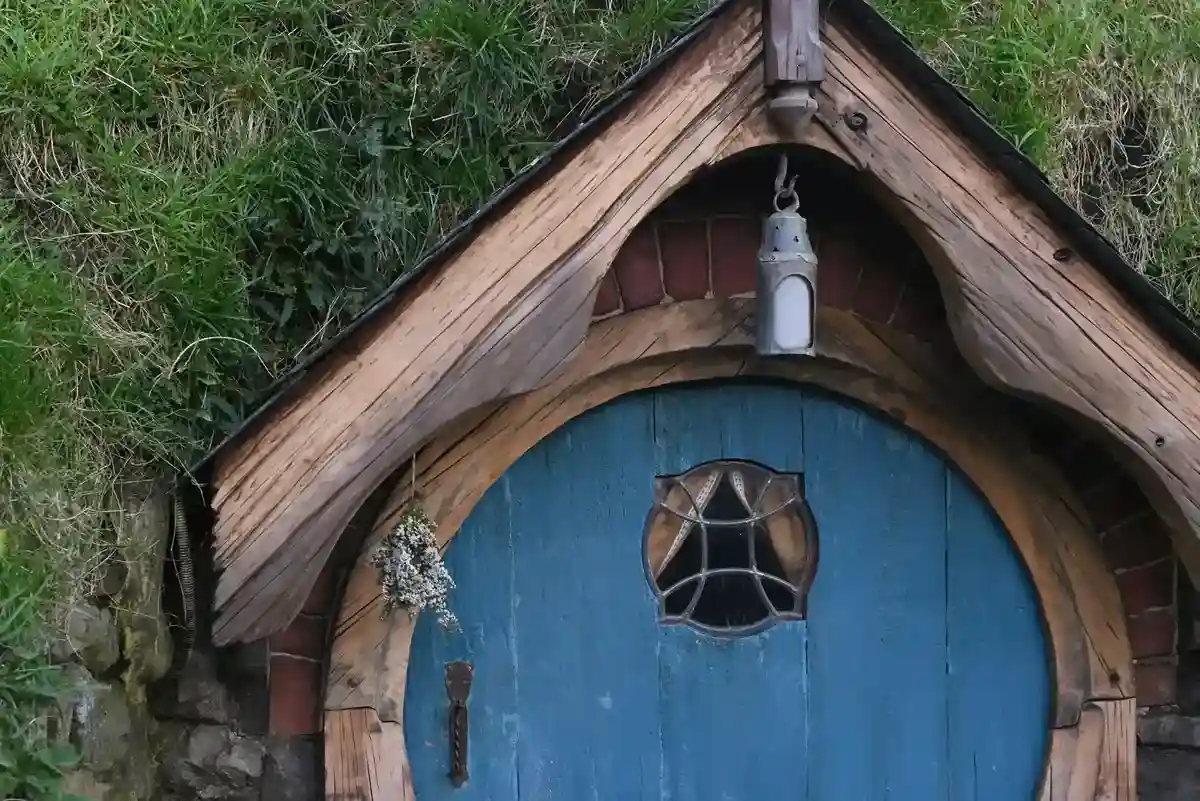Building a hobbit house on a budget of $5,000 might seem daunting, but with the right approach, it’s entirely possible. A hobbit house is not only a charming and unique dwelling but also an eco-friendly and sustainable living space. Whether you’re inspired by the Shire or just love the idea of an earth-sheltered home, this guide will take you through every step of the process, from planning and gathering materials to construction and finishing touches.
Planning Your Hobbit House
Before you begin construction, careful planning is essential to ensure your project stays within budget and meets your needs.
Site Selection
Consider the Landscape: Look for a location with natural slopes and good drainage. A south-facing slope is ideal for natural lighting and passive solar heating. Ensure the soil is stable and not prone to erosion.
Access to Resources: Choose a site close to water, electricity, and any necessary building materials. Proximity to these resources will save time and money during construction.
Designing Your Hobbit House
Simple Circular Design: Opt for a circular or oval design, which is not only iconic but also structurally sound. Circular shapes distribute weight evenly, reducing the need for extensive reinforcement.
Size and Layout: Determine the size of your hobbit house based on your needs and budget. A smaller home will require fewer materials and less labor. Plan a layout that maximizes space efficiency, such as including built-in furniture and storage.
Windows and Doors: Incorporate large windows for natural light and ventilation. Round windows add to the hobbit house aesthetic and can often be sourced from recycled materials.
Budgeting and Cost Estimation
Breakdown of Costs: Divide your $5,000 budget into categories such as foundation, materials, labor, and finishing touches. Prioritize spending on essential items like waterproofing and insulation, and look for savings on decorative features.
Saving on Labor: Consider doing most of the work yourself or enlisting the help of friends and family. DIY labor can significantly reduce costs.
Gathering Materials on a Budget

The key to staying within your budget is sourcing affordable, recycled, and sustainable materials.
Primary Materials
Wood: Reclaimed wood can be used for framing, doors, and windows. Look for untreated wood from demolition sites or salvage yards.
Stone: Collect stones from your property or nearby areas for the foundation and decorative elements. Stones are durable and add a natural touch to your home.
Earth: Use cob (a mixture of clay, sand, straw, and water) or earthbags for the walls. Both options are inexpensive and environmentally friendly.
Insulation: Straw bales provide excellent insulation and are affordable. They can be used in combination with cob or earthbags for walls.
Waterproofing: Invest in quality waterproofing materials for the roof and foundation. Natural options like lime plaster can be cost-effective and eco-friendly.
Finding Recycled and Reclaimed Materials
Salvage Yards and Craigslist: Search for free or low-cost materials from salvage yards, construction sites, and online platforms like Craigslist. Items like windows, doors, and even furniture can often be found for a fraction of the cost of new ones.
Bartering and Trading: Consider bartering your skills or services in exchange for materials. This can be a great way to save money and build connections within your community.
Tools and Equipment
Basic Tools: Essential tools include a shovel, hammer, saw, level, and wheelbarrow. For specialized tasks, consider renting tools instead of purchasing them.
Safety Gear: Don’t forget safety equipment like gloves, goggles, and sturdy footwear. Safety should always be a priority during construction.
Building the Foundation
A strong foundation is crucial for any home, and there are several cost-effective options for hobbit houses.
Excavation
Digging into the Slope: Begin by excavating the area where your hobbit house will sit. The depth and size will depend on your design, but a shallow excavation will save on labor and materials. If possible, do the digging manually to avoid the cost of renting heavy machinery.
Foundation Types
Stone Foundation: Use stones collected from your site or nearby areas to create a sturdy base. This traditional method is cost-effective and environmentally friendly.
Gravel Foundation: For an even cheaper option, spread a thick layer of gravel across the base of your excavation. Gravel provides excellent drainage and is easy to work with.
Drainage Solutions
French Drains: Install a French drain system around the perimeter of your foundation to direct water away from the structure. This can be done using PVC pipes and gravel, ensuring your home stays dry even during heavy rains.
Framing the Structure

Framing provides the skeleton of your hobbit house, and there are several low-cost methods to achieve this.
Wooden Frame
Reclaimed Timbers: Use round timbers or logs for the frame, which can often be sourced for free. These materials are not only strong but also add to the rustic aesthetic of your hobbit house.
Simple Structure: Keep the framing simple to reduce costs. A basic wooden frame will support the walls and roof, with additional reinforcement as needed.
Roof Support
Curved Beams: The iconic rounded roof of a hobbit house requires curved beams. Bentwood or repurposed materials can create the desired shape. Ensure the roof is well-supported, as it will need to bear the weight of soil and vegetation if you opt for a green roof.
Incorporating Natural Features
Natural Elements: Use tree trunks, large stones, or other natural materials to enhance the structure. These elements not only add character but also reduce the amount of wood needed for framing.
Constructing the Walls
The walls of your hobbit house should be strong, insulating, and in harmony with the environment.
Cob Walls
Mixing Cob: Combine clay, sand, straw, and water to create cob. This traditional building material is affordable and provides excellent insulation. Apply the cob in layers to the wooden frame, allowing each layer to dry before adding the next.
Thick, Insulating Walls: Build thick walls for better insulation. The thermal mass of cob will help regulate the interior temperature, keeping your home cool in the summer and warm in the winter.
Earthbag Construction
Filling Earthbags: Fill polypropylene bags with soil and stack them to create sturdy walls. Earthbag construction is durable, fire-resistant, and provides excellent thermal mass. Cover the bags with plaster for a smooth finish.
Affordable and Sustainable: Earthbags are an inexpensive option, and the materials can often be sourced from the site itself. This method is also highly sustainable.
Straw Bale Insulation
Using Straw Bales: Straw bales offer high R-value insulation and can be used in combination with cob or earthbags. They are easy to work with and can be plastered over for a finished look.
Energy Efficiency: A well-insulated hobbit house will require minimal heating and cooling, reducing your energy costs over time.
Waterproofing and Sealing
Applying Plaster: Use lime plaster or earth plaster mixed with natural oils to waterproof the walls. These materials keep moisture out while allowing the walls to breathe, preventing mold and mildew.
Sealing Joints: Ensure all joints and connections are properly sealed to prevent drafts and water intrusion.
Creating the Roof
The roof is a defining feature of a hobbit house, and there are several options to achieve the iconic look.
Green Roof Installation
Waterproof Membrane: Start by laying down a waterproof membrane over the roof structure. This is essential to prevent leaks and water damage.
Adding Soil and Vegetation: Add a layer of soil and plant grass, moss, or other low-maintenance vegetation. A green roof not only blends your home into the landscape but also provides insulation and helps manage rainwater.
Alternative Roofing Options
Thatch or Wooden Shingles: If a green roof isn’t feasible, consider using thatch or wooden shingles. Both options are natural, sustainable, and add to the rustic charm of your hobbit house.
Recycled Materials: Look for recycled roofing materials like metal sheets or tiles, which can be an affordable and durable alternative.
Ventilation and Insulation
Roof Ventilation: Proper ventilation is crucial to prevent moisture buildup. Incorporate vents or skylights that can be opened to allow fresh air in.
Insulating the Roof: Ensure the roof is well-insulated to maintain a comfortable temperature inside the house. Natural insulation materials like straw or wool are effective and eco-friendly.
Installing Windows and Doors
Windows and doors are essential for both function and aesthetics in your hobbit house.
Choosing Recycled Windows and Doors
Sourcing Recycled Items: Look for windows and doors at salvage yards or online marketplaces. Recycled options are often cheaper and add a unique character to your home.
Custom Fitting: Customize the size and shape of windows and doors to fit your design. Round windows are a hallmark of hobbit houses and can be made from repurposed materials.



